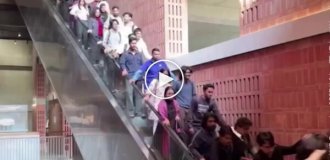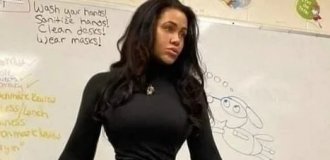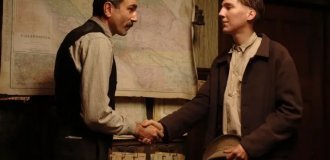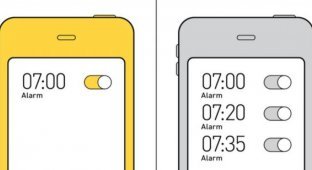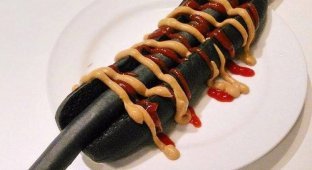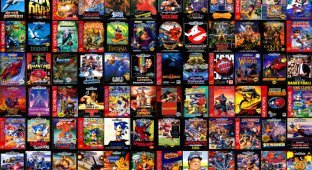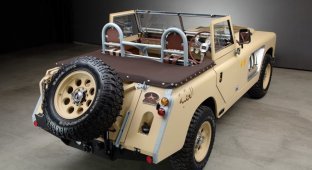19 interesting facts about the cult animated series of our childhood “Teenage Mutant Ninja Turtles” (20 photos)
This animated series won the hearts of millions of young viewers, and many children of the 90s associated themselves with one of the turtles. 
1. To us (90s kids), the Teenage Mutant Ninja Turtles are fun heroes who fight evil with all kinds of jokes, but in the original comics they were completely different. The original turtles are pretty tough guys who shred their enemies without sparing them at all. 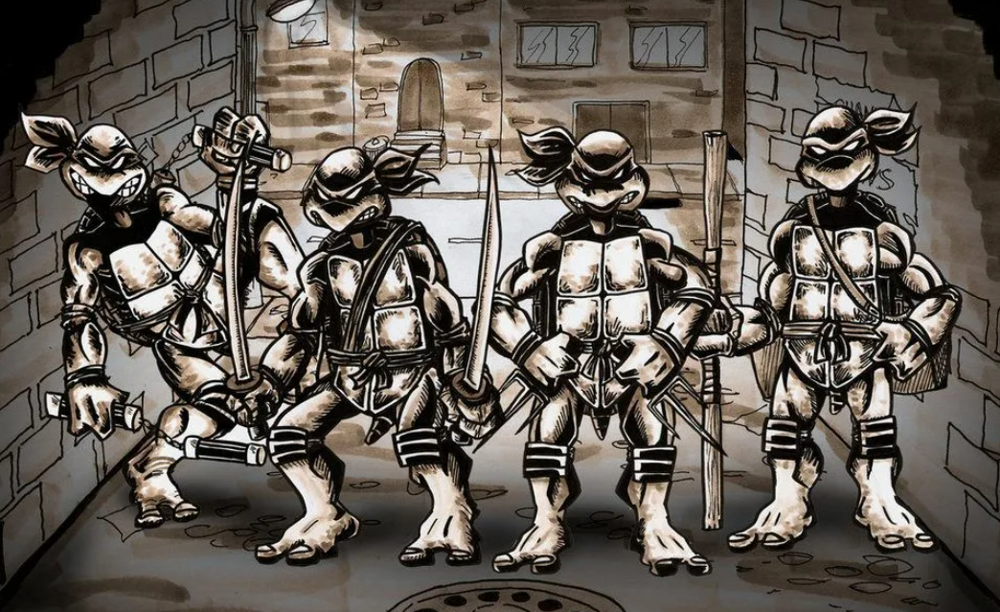
But since the animated series was aimed primarily at a children's audience, the creators Peter Laird and Kevin Eastman decided to make them more fun, and the ninjas from the "Foot" clan were replaced with robots, since robots are soulless machines, not people. This means that their destruction will not be considered murder. Although, some social activists were outraged that turtles were destroying robots, as they believed that this would still encourage fragile children’s minds to violence.
Moreover, in the original the turtles wore masks of the same color, namely red. But the creator of the original comics, Peter Laird, decided that the turtles needed to be given more individuality by giving them masks and headbands of different colors. 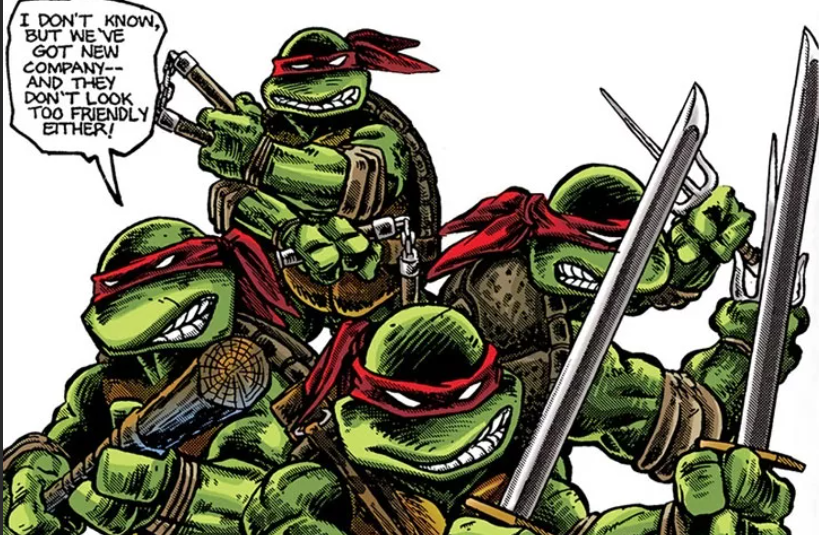
As a result, this color scheme caught on so well that in all subsequent comics, animated series and films, the turtles wore these very colors, that is, blue, red, purple and orange.
2. It’s hard to deny that the animated series “Teenage Mutant Ninja Turtles” is a cult one, but initially it shouldn’t have existed at all. The fact is that the creators of the original comics wanted to release a series of toys, and turned to the famous company Playmates Toys about this. But they said that they would not release toys based on comic books. But if an animated series is released on this topic, then that’s a different matter. 
Original Teenage Mutant Ninja Turtles toys from Playmates toys
Then it was decided to release a short animated series of 5 episodes only for the Playmates Toys company to give the green light for the release of a series of toys. And it worked. Moreover, in this series of toys there were even those characters who had never appeared in the animated series before, but only in comics (for example, Triceraton). And the turtles themselves looked more like a comic book than a cartoon series.
Well, such characters as Bebop, Rocksteady and Krang were invented exclusively for the animated series with the goal of releasing and selling as many toys as possible.
But in the end, the series resonated with the audience so much that the creators began filming new episodes. As a result, the animated series expanded into 10 seasons, which included a total of 193 episodes. 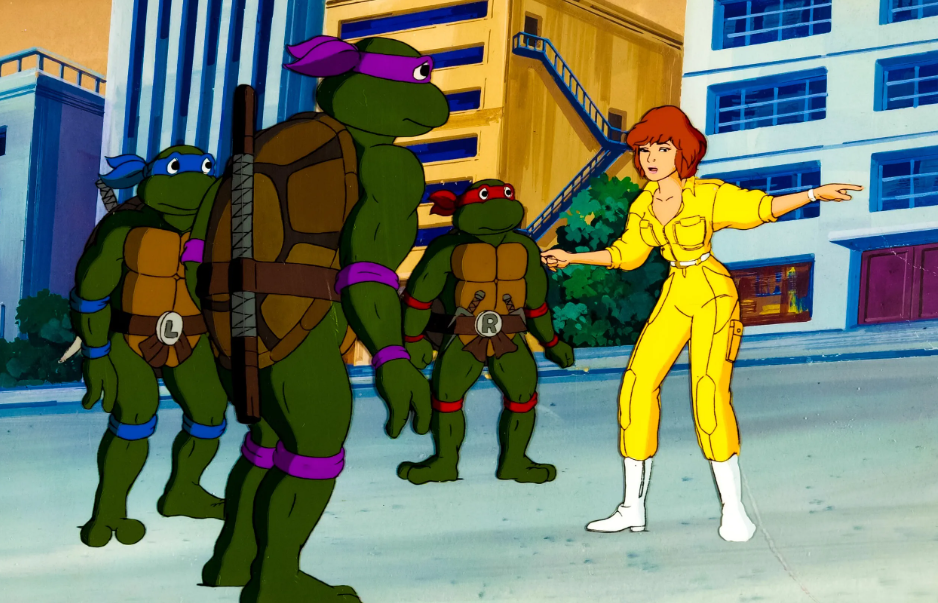
3. The creator of the original comics, Peter Laird, did not like the animated series, as he felt that there was little left of the original turtles in the film. But Lerge was especially irritated by Bebop and Rocksteady, namely their stupidity and stupid jokes. 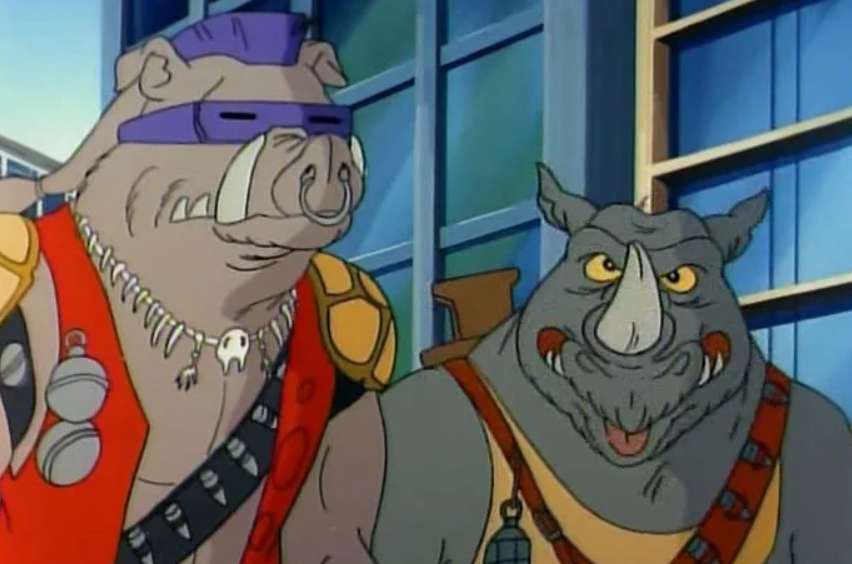
Bebop and Rocksteady from the animated series "Teenage Mutant Ninja Turtles" (1987)
Also, Peter Lenrd and Kevin Eastman (the second creator of the original comics) did not like Krang. Laird and Eastman considered this image ridiculous (we are not even talking about Krang himself, but about his cybernetic body). But the Playmates toys company told the creators that this was just concept art, and the final version would be different. But when work on the last fifth episode was completed, it turned out that this particular sketch became the final one, and nothing was changed. 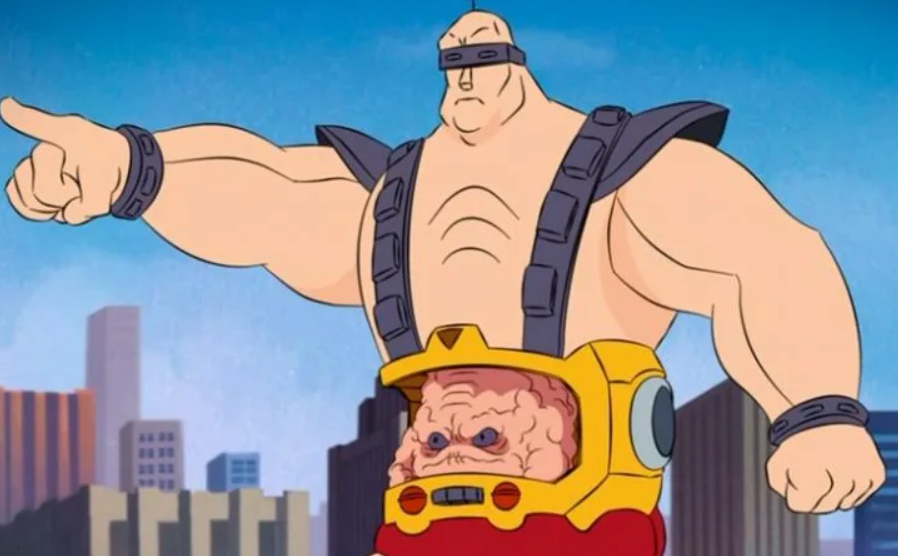
Krang from the animated series "Teenage Mutant Ninja Turtles" (1987)
But it’s still worth noting that despite the fact that Lerd didn’t like the animated series, it was he who raised the turtles to the skies, and it was thanks to him that new projects began to appear. For example, in 1990 the first full-length film “Teenage Mutant Ninja Turtles” was released, which turned out to be commercially successful. Well, then other projects followed, including new animated series, comics, a new film and, of course, a whole bunch of video games on various platforms.
4. Since the eighth season, the concept of turtles has changed dramatically. The series began to take on a more serious character,there, eternal darkness reigned, new characters appeared, the main musical theme changed, and the old villains faded into the background, as they were replaced by a villainous alien race. And if you look at the turtles themselves, their appearance has undergone some changes. 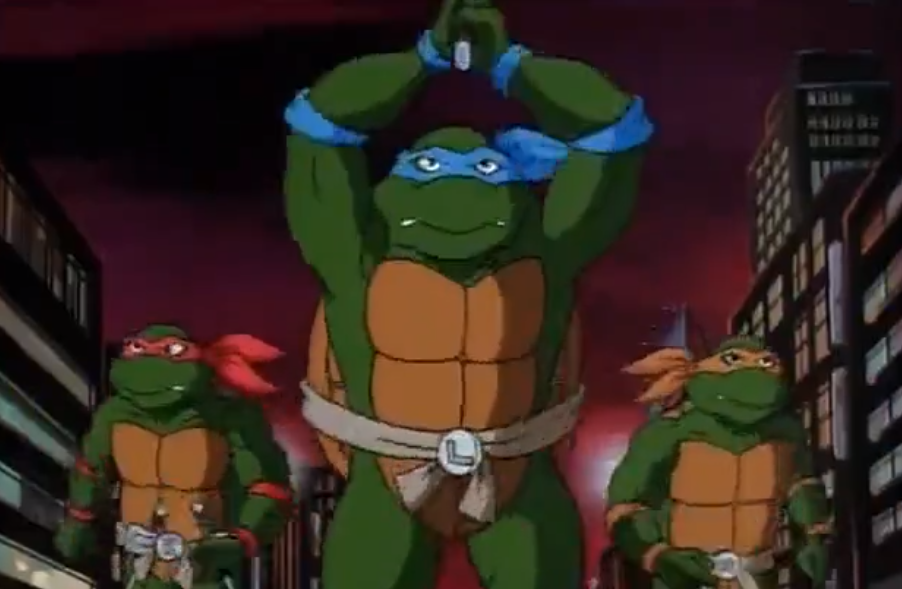
"Teenage Mutant Ninja Turtles" Still from the Season 8 intro
It would seem, why did the series change its vector so abruptly? The thing is that in 1992 the cult animated series “X-Men” was released, because of which the ratings of the animated series “Teenage Mutant Ninja Turtles” sharply declined. And in order to somehow maintain their position, the creators of the series, after analyzing the situation, decided to direct the cartoon in a new, darker and more serious direction. True, as for me, because of this the animated series has lost its former charm. Personally, I don't like the new seasons anymore. Although, maybe this is due to the fact that I myself had already grown up by that time.
5. Only in this project about the Teenage Mutant Ninja Turtles, Baxter Stockman is white, that is, a representative of the Caucasian race. In all other films, cartoons and even in the original comics, Baxter Stockman is black. 
Baxter Stockmann from the animated series "Teenage Mutant Ninja Turtles" (1987) and the animated series "Teenage Mutant Ninja Turtles" (2003)
6. Typically, voice actors work separately. That is, this or that actor comes to the studio and separately voices his character without even meeting other voice actors.
But in the case of Teenage Mutant Ninja Turtles, it was decided that the voice actors for the main characters would work together. And this idea bore fruit, as the actors really became friends, which had a beneficial effect on the voice acting, since chemistry was felt between them while working.
7. This animated series is almost the only project where the turtles themselves address each other by abbreviated names. In other projects, including the original comics, the turtles address each other - Leo, Mikey, Donnie and Raph. 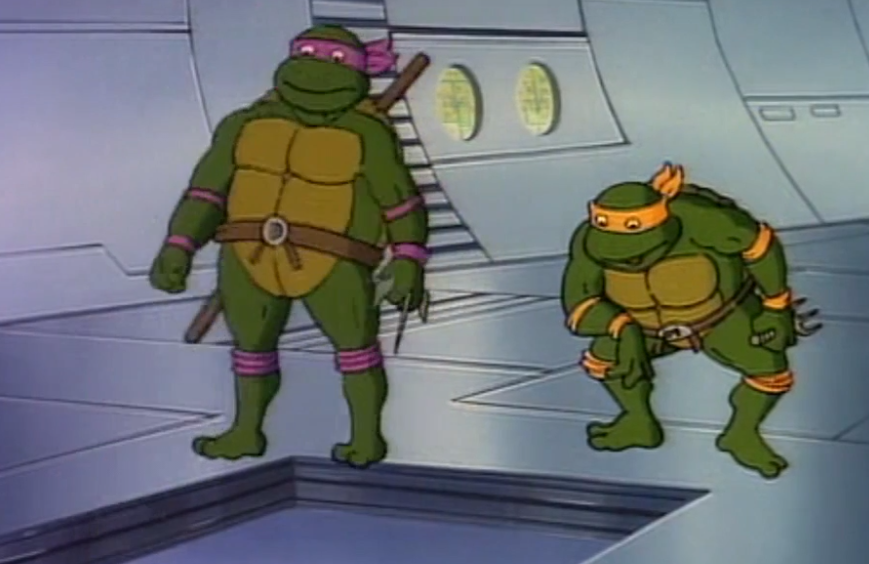
Still from the animated series "Teenage Mutant Ninja Turtles" (season 1, episode 2)
8. At the time of the release of the last episode, Teenage Mutant Ninja Turtles was the longest animated series. But over time, this record was broken by the animated series “The Simpsons,” which still holds this bar to this day, since the production and release of new episodes is still ongoing. At the moment, the animated series "The Simpsons" has 757 episodes. 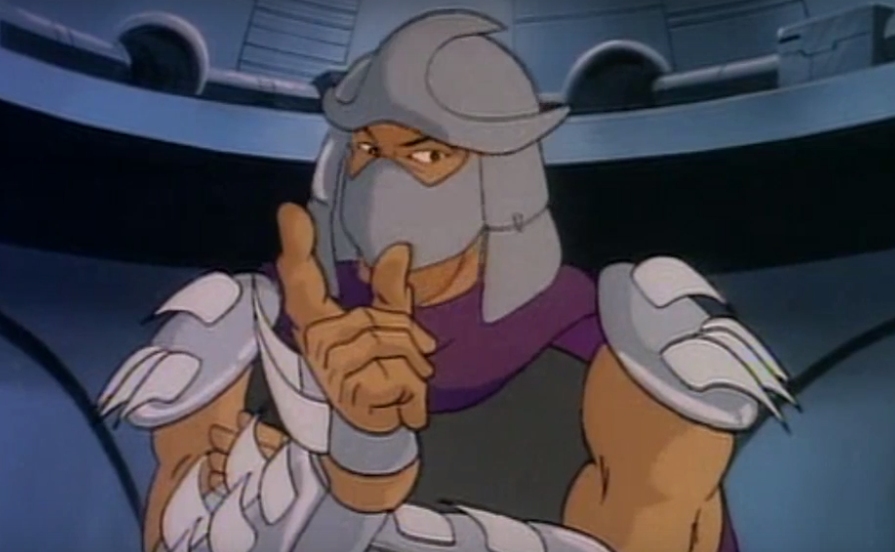
Shredder from the animated series "Teenage Mutant Ninja Turtles" (season 1, episode 2)
9. In 2009, a full-length crossover called “Turtles Forever” was released. In this cartoon, the turtles of 1987 met the turtles of the 2003 cartoon series, and then the original comic reptiles. And yes, the cartoon brought up the theme of the multiverse even before it became mainstream. In general, everyone who can was nostalgic. 
Still from the cartoon "Turtles Forever"
10. The original comic book authors, Peter Laird and Kevin Eastman, loved martial arts (including films with Bruce Lee), as well as art history. That is why they decided to create a comic book about ninjas, naming their heroes after famous Renaissance artists. They thought it would even be funny. 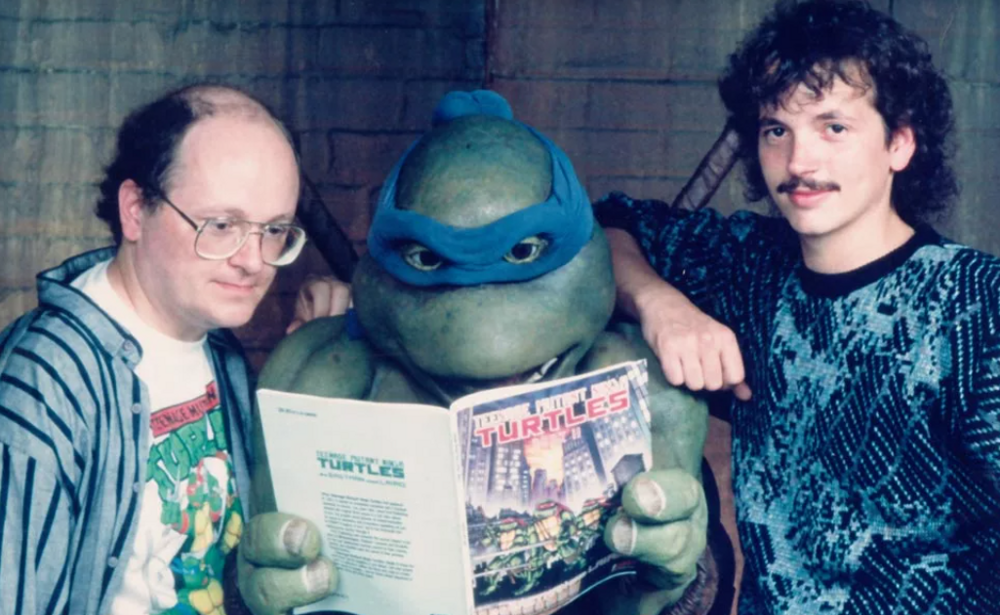
11. When transferred from the comic to the animated series, Raphael underwent the biggest changes. In the original comics, Raphael was the most cruel and aggressive turtle, while in the animated series he is shown as a kind of joker. In one of the episodes, the villain even took Rafael prisoner because he was making the funniest jokes, which played into the villain’s hands. 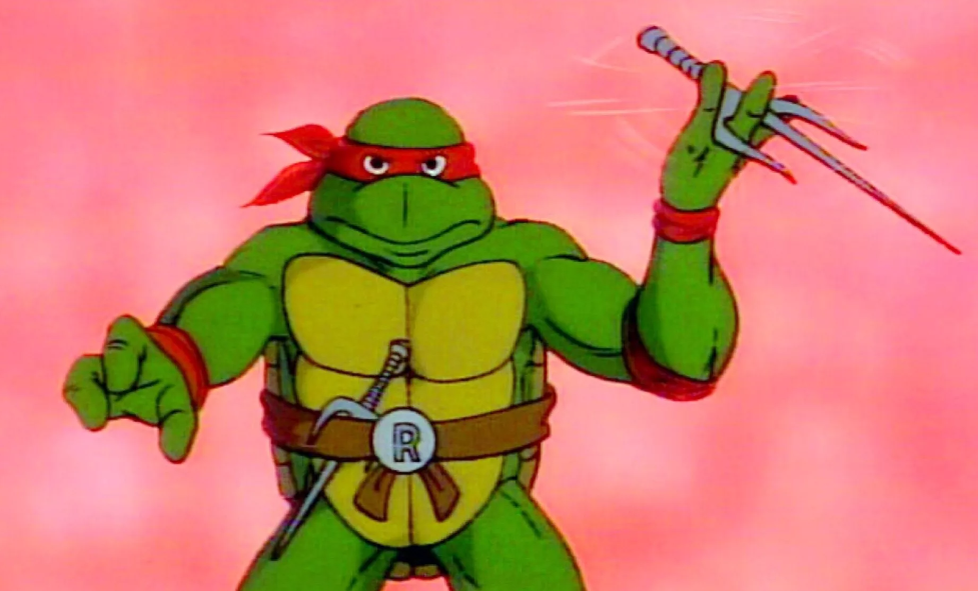
Raphael from the animated series "Teenage Mutant Ninja Turtles" (scene from the title screen)
12. In the animated series, it is no coincidence that the turtles wear belts with the letters that begin their names. It would seem, why are letters needed if turtles can be distinguished by their bandages? But the creators decided to take such a step so that children suffering from color blindness could identify the characters by the letters on their headbands. Well done. 
13. Sometimes the animators made a lot of mistakes, which is why some frames looked very ridiculous. For example, in one of the episodes Donatello was given a second stick, in another episode he took awayShredder was painted to match the color of human skin, and in another episode they completely forgot to draw Leonardo’s head. 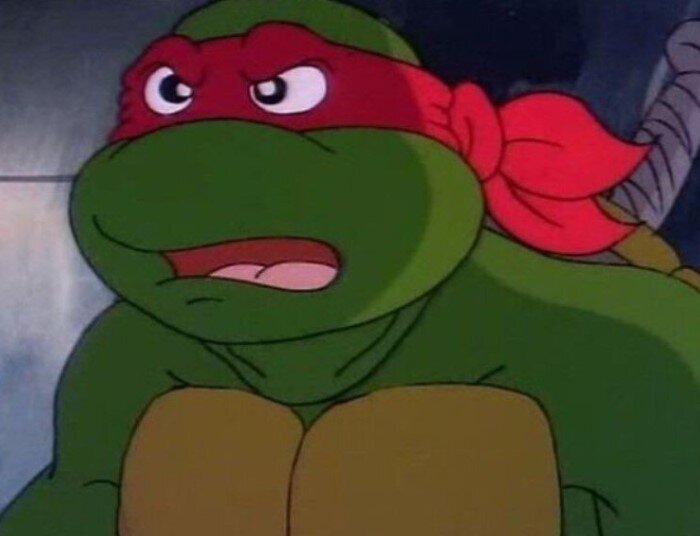
Why is Leonardo's katana behind Raphael's back?
And not to mention the fact that sometimes the creators drew locations incorrectly, confused the color of turtle masks, etc. Of course, we didn’t notice this as children, but now it looks very funny. 
And in this frame, Rafael should theoretically be behind April. That would explain why he is smaller than her. But since he is in front of her, he just seems very small.
14. Michelangelo’s main weapon is nunchucks, but from a certain moment he suddenly suddenly stopped using them, replacing the weapon with a rope with a hook. Also, all moments where Michelangelo is shown with nunchucks were removed from the screensaver. 
This is explained by the fact that in some European countries (in particular Great Britain) nunchucks were prohibited weapons, like the ninjas themselves. And in order not to lose the European market, the creators took such a step with a replacement.
Moreover, in the British version the series is called "Teenage mutants hero turtles", that is, not ninjas, but heroes.
15. Based on the animated series “Teenage Mutant Ninja Turtles,” a huge number of games were released on various platforms. On the NES console (Dendy) alone, 4 parts of the game about turtles were released. Moreover, the last fourth part was already a fighting game. By the way, I recommend that you watch my detailed video about the game "Teenage mutants ninja turtles 4: Tournament fighters" on the Dendy console. I'm sure you'll like it.
16. Such a popular character as Casey Jones appeared in the animated series “Teenage Mutant Ninja Turtles,” but only stayed for a couple of episodes. Moreover, in this animated series there was not a single hint of a romantic relationship between him and April O'Neil. And Casey never took off his mask, although in all other projects the audience knew who Jones really was. 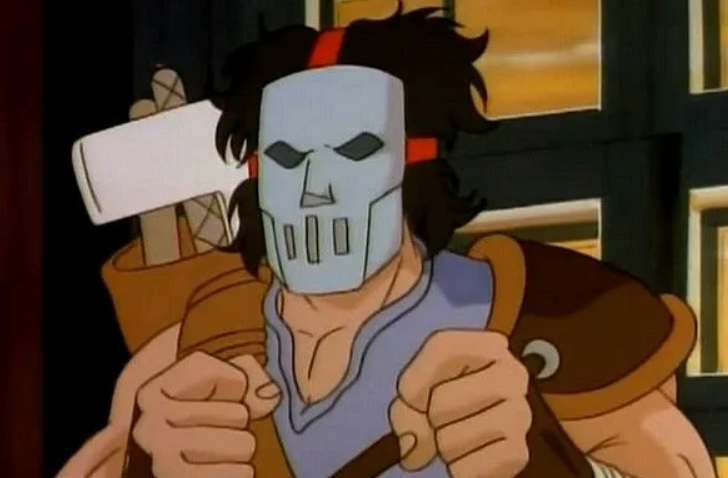
Casey Jones
17. The iconic phrase "Kawabanga", which Michelangelo constantly says, was not written into the script. This is a pure improvisation by actor Townsend Coleman, who voiced Michelangelo. According to him, he heard this phrase in an advertisement, after which they blurted it out while working. The creators decided that it sounded cool and even decided to assign this word to Michelangelo.
18. Only in the animated series "Teenage Mutant Ninja Turtles" (1987) Splinter is a mutated Hamato Yoshi. In the original comics and all other turtle projects, Splinter was Hamato Yoshi's pet rat before his mutation. 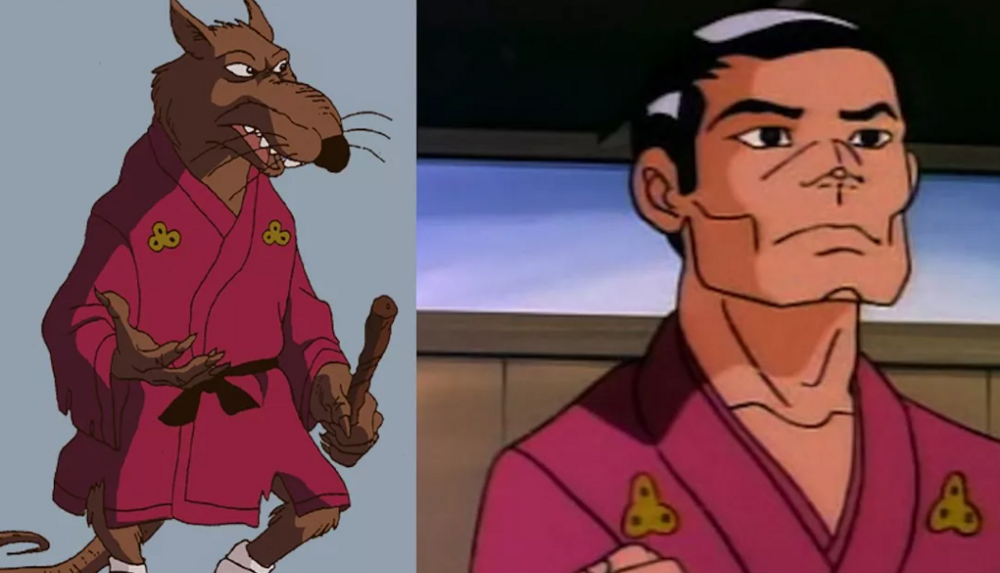
Teacher Splinter (Hamato Yoshi) in mutated and human form
19. Despite the fact that the first season of the animated series was shown in 1987, the cartoon reached us only in 1993. Thanks to the 2x2 TV channel for our happy childhood.


